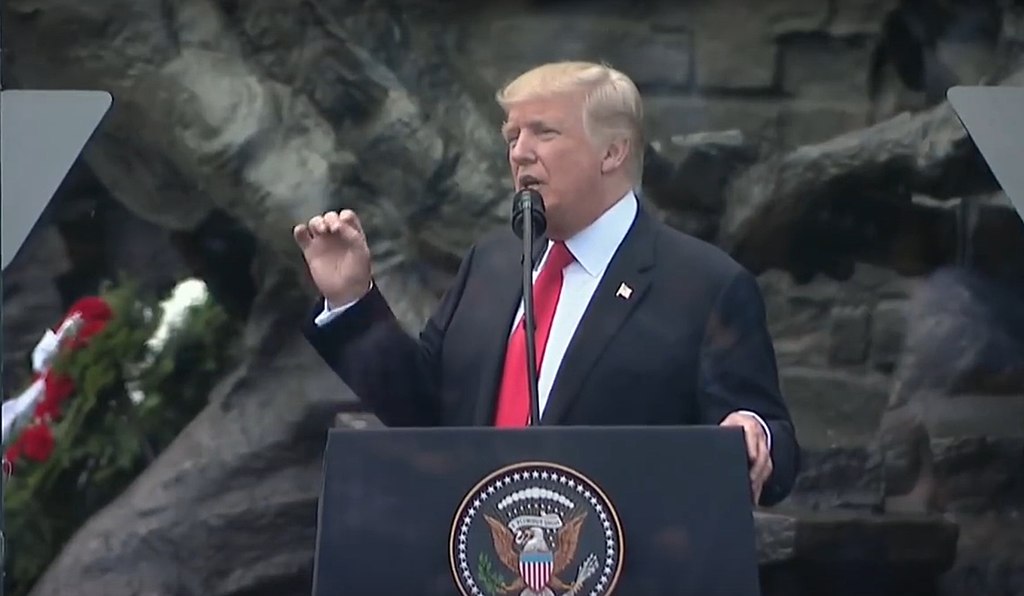In 2025, Donald Trump’s foreign military engagements are shaping global geopolitics, sparking debate about their effectiveness and long-term consequences. With a focus on reshaping U.S. alliances and addressing global conflicts, Trump’s actions have drawn both praise and criticism as the world watches closely.
Realigning Global Alliances
Trump’s foreign policy in 2025 reflects his focus on realigning U.S. military alliances to better serve American interests. His administration has pushed NATO members to increase defense spending, with mixed success. While some European allies have agreed to bolster their military budgets, others remain hesitant, citing strained diplomatic relations and economic constraints.
In Asia, Trump has strengthened ties with India and Japan to counter China's growing influence in the region. Joint military exercises and expanded arms deals underscore his commitment to reinforcing U.S. presence in the Indo-Pacific. At the same time, he has called for a reduction in U.S. military bases in South Korea, citing cost concerns and a need for regional allies to take on more responsibility.
Critics argue that these moves risk destabilizing established alliances. Experts warn that shifting military commitments could embolden adversaries like China and Russia, while creating uncertainty among long-standing allies.
Managing Global Conflicts
Trump’s military engagements have also included efforts to address ongoing conflicts. The administration has maintained a cautious presence in the Middle East, focusing on counterterrorism operations rather than large-scale interventions. In Iraq and Syria, U.S. forces continue to support local allies in fighting the remnants of ISIS, though troop levels have been reduced.
The administration’s approach to Ukraine has been a point of contention. Trump has limited direct military aid to Kyiv, opting instead for diplomatic measures to encourage a ceasefire with Russia. Critics argue that this strategy undermines Ukraine’s ability to defend itself, while supporters praise the effort to avoid escalating tensions with Moscow.
Elsewhere, Trump has prioritized reducing U.S. involvement in Africa, scaling back operations in regions like the Sahel, where counterterrorism missions have faced logistical and political challenges. This decision has drawn criticism from security experts, who warn it could create a vacuum for extremist groups to expand.
Divided Public Reaction
Trump’s military policies have sparked fierce debate on social media, reflecting a divided public:
- @GlobalPeaceNow: “Trump’s foreign military moves are reckless. Weakening alliances while emboldening adversaries is a recipe for disaster.”
- @AmericaFirst2025: “Finally, a president who puts American interests first. Allies need to step up and do their part.”
- @MilitaryWatchdog: “Pulling back from Africa is a mistake. Extremist groups will exploit this to expand their reach.”
- @IndoPacificFocus: “Strengthening ties with India and Japan is smart. Countering China is key to maintaining global stability.”
- @UkraineDefender: “Limiting aid to Ukraine is a betrayal of democratic values. We should be standing against Russian aggression.”
- @MiddleEastMatters: “Less intervention in the Middle East is long overdue. Focus on diplomacy, not endless wars.”



 Trump Expands U.S. Travel Ban to Antigua and Barbuda, Dominica, Sparking Economic Fears in the Caribbean
Trump Expands U.S. Travel Ban to Antigua and Barbuda, Dominica, Sparking Economic Fears in the Caribbean  UN Warns Gaza Humanitarian Aid at Risk as Israel Registration Rules Threaten NGO Operations
UN Warns Gaza Humanitarian Aid at Risk as Israel Registration Rules Threaten NGO Operations  Pakistan’s Army Chief Faces Gaza Troop Dilemma Amid US Pressure
Pakistan’s Army Chief Faces Gaza Troop Dilemma Amid US Pressure  Trump Administration Plans Major Increase in Denaturalization Cases for Naturalized U.S. Citizens
Trump Administration Plans Major Increase in Denaturalization Cases for Naturalized U.S. Citizens  Dan Bongino to Step Down as FBI Deputy Director After Brief, Controversial Tenure
Dan Bongino to Step Down as FBI Deputy Director After Brief, Controversial Tenure  NSW to Recall Parliament for Urgent Gun and Protest Law Reforms After Bondi Beach Shooting
NSW to Recall Parliament for Urgent Gun and Protest Law Reforms After Bondi Beach Shooting  Republicans Raise National Security Concerns Over Intel’s Testing of China-Linked Chipmaking Tools
Republicans Raise National Security Concerns Over Intel’s Testing of China-Linked Chipmaking Tools  Venezuela Seeks UN Security Council Meeting Over U.S. Oil Tanker Blockade
Venezuela Seeks UN Security Council Meeting Over U.S. Oil Tanker Blockade  Trump Attends Dover Ceremony Honoring U.S. Personnel Killed in Syria
Trump Attends Dover Ceremony Honoring U.S. Personnel Killed in Syria  U.S. Senators Move Toward Deal to Strengthen Military Helicopter Safety Rules
U.S. Senators Move Toward Deal to Strengthen Military Helicopter Safety Rules  Barham Salih Elected as Next UN High Commissioner for Refugees
Barham Salih Elected as Next UN High Commissioner for Refugees  Argentina Unions Rally Against Milei’s Labor Reform as Congress Debates Key Bill
Argentina Unions Rally Against Milei’s Labor Reform as Congress Debates Key Bill  U.S.-Russia Talks in Miami Raise Hopes for Potential Ukraine War Deal
U.S.-Russia Talks in Miami Raise Hopes for Potential Ukraine War Deal  Trump Orders Blockade of Sanctioned Oil Tankers, Raising Venezuela Tensions and Oil Prices
Trump Orders Blockade of Sanctioned Oil Tankers, Raising Venezuela Tensions and Oil Prices  Trump Signs Order to Ease Federal Marijuana Rules, Signaling Major Policy Shift
Trump Signs Order to Ease Federal Marijuana Rules, Signaling Major Policy Shift  Jared Isaacman Confirmed as NASA Administrator, Becomes 15th Leader of U.S. Space Agency
Jared Isaacman Confirmed as NASA Administrator, Becomes 15th Leader of U.S. Space Agency  U.S. House Advances GOP Healthcare Bill as ACA Subsidies Near Expiration
U.S. House Advances GOP Healthcare Bill as ACA Subsidies Near Expiration 


























